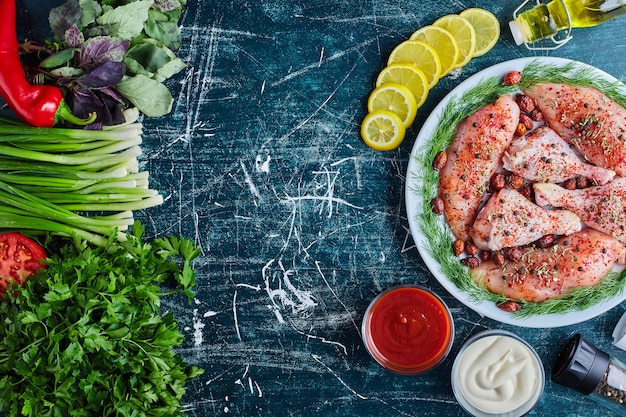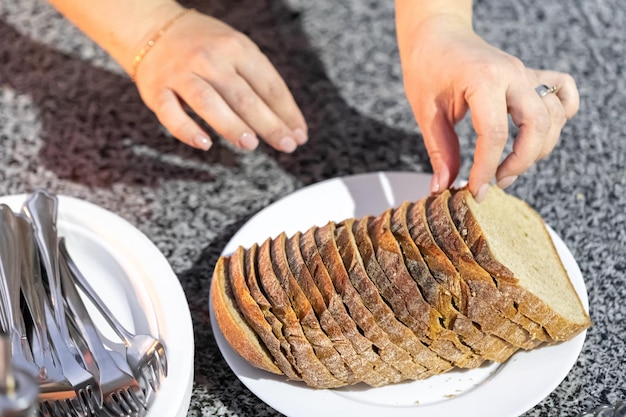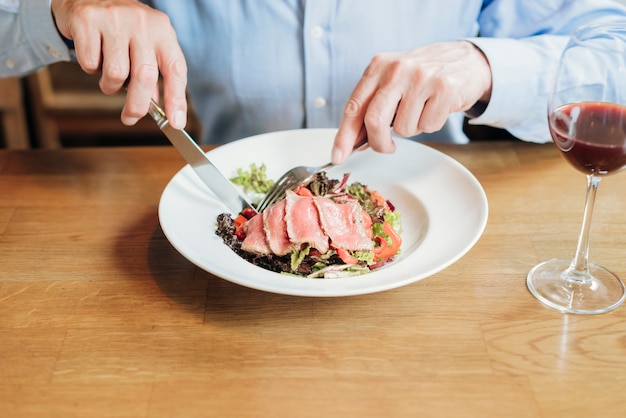tuna steak is a culinary delight. Its delicate, yet robust flavour, combined with its versatility, makes it a favourite among home cooks and chefs alike. But, there's a common question that often arises: how long do you cook a tuna steak for? The answer, my friends, is not as simple as flipping a burger. It's a journey we'll embark on together, exploring the intricacies of tuna steak cooking and ensuring you achieve those delicious results you've been dreaming of.
Part 1: Understanding Tuna Steak

Before diving into the sizzling heat of the kitchen, let's understand our star ingredient – the tuna steak. It's not just any fish; it's a tapestry of flavours and textures waiting to be unveiled. The key lies in knowing the different types of tuna and how to select the perfect cut.
1.1 Types of Tuna for Steaks
The world of tuna is surprisingly diverse, and it's important to choose the right kind for your steak. Here are the most common varieties you'll encounter:
- Yellowfin Tuna: A true classic, yellowfin is a crowd-pleaser with its firm texture, rich flavour, and vibrant colour. The colour gradient from dark reddish-brown on the outside to pale pink inside is quite striking. It's versatile, handling both delicate and bold preparations with ease.
- Albacore Tuna: This is the "everyday" tuna, offering a slightly milder flavour and a lighter texture compared to yellowfin. It's a firm, flaky fish that's a bit easier on the wallet, making it a great option for everyday meals.
- Bigeye Tuna: This is the luxurious choice, known for its deep, rich flavour and incredible fat content. The result? A melt-in-your-mouth experience. But be prepared – it comes with a hefty price tag.
- Skipjack Tuna: This is the most commonly found tuna, and often the most affordable. It's leaner than the other options with a lighter, more delicate flavour and texture.
Experimentation is key. I’ve tried them all and found my personal favourite is yellowfin – that rich, almost meaty flavour just hits the spot. But, your taste buds might prefer something else entirely!
1.2 choosing the right cut
Once you've decided on the type of tuna, it's time to choose the cut. Each cut offers a unique interplay of flavour and texture, influencing the final outcome of your dish.
- The Loin: This is the prized cut, a thick, meaty slab from the back of the fish. It boasts a rich, intense flavour and a tender texture. It's perfect for grilling or searing, allowing the natural flavours of the tuna to shine.
- The Belly: This is the fattiest part of the tuna, and it's pure indulgence. Think buttery, melt-in-your-mouth texture, ideal for dishes that call for a luxurious richness. Look for "ventre" or "toro" cuts.
- The Tail: This is a more budget-friendly option, yet still very delicious. It's leaner, with a firm texture and a slightly more delicate flavour. It's excellent for pan-frying or grilling, particularly in dishes where you want the tuna to be more prominent.
It's all about finding a balance between your cooking style, your budget, and your desired flavour profile. Don't be afraid to step outside your comfort zone and try something new!
Part 2: Preparing the Tuna Steak

The magic of a good tuna steak doesn’t just happen on the stovetop. It's about preparing the canvas for the flavours to dance upon. It's about getting the tuna ready to be transformed into a culinary masterpiece.
2.1 Pat It Dry
First things first, pat the tuna steak dry with paper towels. This is essential for achieving a beautiful sear – think of it as preparing your canvas for a perfect painting. The dryness ensures the heat concentrates on the surface, creating that irresistible golden crust.
2.2 Seasoning is Key
Now for the flavour infusion! I'm a firm believer in keeping things simple – a good pinch of salt and pepper is often all you need. But, why limit yourself? Experiment with herbs like rosemary, thyme, and basil. Add a touch of warmth with spices like smoked paprika, chili flakes, or cumin.
I've found that a touch of smoked paprika adds a depth of flavour that really complements the tuna. Don't be shy with your seasoning – the tuna cooks quickly, so you want the flavours to penetrate throughout.
2.3 A Little Bit of Oil
Just before cooking, a light brush of olive oil is all you need. It helps create a gorgeous golden crust and prevents the tuna from sticking to the pan. You can use any oil you prefer – avocado oil, grapeseed oil – just make sure it’s at room temperature for even distribution.
Part 3: Cooking Time - The Crucial Factor

Now, we get to the crux of the matter: cooking time. This is where it gets a little tricky, but I’m here to guide you through the nuances. It's a dance between the thickness of your steak, your desired level of doneness, and your chosen cooking method.
3.1 Thickness Matters
The thickness of your tuna steak dictates how long it needs to cook. A thick steak requires more time than a thin one to cook through. Always check the thickness before you start cooking.
3.2 Desired Doneness
Tuna can be cooked to various levels of doneness, each with its own unique appeal:
3.2.1 Rare:
This is the most delicate option, featuring a bright red centre. It offers a soft, almost yielding texture with a light, delicate flavour. Think of it as a gentle dance on the tongue. This level of doneness is best suited for thinner steaks, allowing for quick cooking without overcooking.
3.2.2 Medium-Rare:
A step up from rare, medium-rare provides a slightly firmer texture with a pinkish centre. The flavour is more pronounced, and the texture offers a touch of chewiness. It's the happy medium, appealing to those who enjoy a bit more substance.
3.2.3 Medium:
This is the most cooked option, resulting in a brown centre. The texture is firm, and the flavour is more intense. It’s perfect for thicker steaks, as the longer cooking time ensures it’s cooked through.
3.3 Timing is Everything
Here’s a general guide to timing, based on steak thickness and your desired doneness. Remember, these are guidelines – always use your own judgement and check the tuna with a thermometer for accuracy.
Thin Tuna Steak (1-inch thick)
| Doneness | Cooking Time per Side (Minutes) |
|---|---|
| Rare | 1-2 |
| Medium-Rare | 2-3 |
| Medium | 3-4 |
Thick Tuna Steak (1.5-2 inches thick)
| Doneness | Cooking Time per Side (Minutes) |
|---|---|
| Rare | 2-3 |
| Medium-Rare | 3-4 |
| Medium | 4-5 |
Remember, these are just starting points. You may need to adjust the cooking time slightly depending on the specific thickness of your steak and the heat of your pan or grill.
Part 4: cooking techniques
Now, it's time to put those culinary skills to work! There are several ways to cook tuna steak, each offering unique flavour and texture profiles. Let’s explore some popular methods:
4.1 Searing
This is my favourite way to cook tuna steak. It's fast, simple, and creates a beautiful, golden crust with a tender, juicy centre. Searing is all about concentrating heat on the surface, sealing in the flavours and juices. You'll need a cast-iron skillet for this method, heated over medium-high heat.
Place your prepped tuna steak in the hot pan and cook for 2-3 minutes per side, adjusting the time based on thickness and desired doneness. You'll know it's ready when the exterior is golden brown and the interior is still slightly pink. It should feel firm, but still springy to the touch.
4.2 Grilling
Grilling is another fantastic way to cook tuna steak, adding a smoky depth of flavour. Preheat your grill over medium-high heat, making sure to clean the grill grates to prevent sticking.
Place the tuna steak on the grill and cook for 3-4 minutes per side, again adjusting based on thickness and desired doneness. Look for those beautiful grill marks and a firm, yielding texture.
4.3 Pan-Frying
Don't have a grill or cast-iron skillet? No problem! Heat a non-stick frying pan over medium-high heat and add your prepped tuna steak. Cook for 2-3 minutes per side, depending on your preference. For extra richness, add a pat of butter to the pan as it heats.
4.4 Baking
You can also bake tuna steak, although this method tends to produce a less crispy crust. Preheat your oven to 400°F (200°C). Place the tuna steak on a baking sheet lined with parchment paper and bake for 10-12 minutes, adjusting based on thickness and desired doneness.
Part 5: Checking for Doneness
The last thing you want is a dry, overcooked tuna steak. So, how do you know when it's ready? There are a couple of trusty methods to ensure your tuna steak is cooked to perfection:
5.1 The Finger Test
This is a classic technique, but it requires a bit of practice. Gently press your finger onto the centre of the tuna steak. If it feels firm and springy, it’s medium-rare. If it feels soft and yielding, it’s rare. And if it feels very firm, it's medium.
This method is subjective, so it's best to use it alongside another method for more accurate results.
5.2 The Thermometer
The most reliable method is to use a meat thermometer. Insert the thermometer into the thickest part of the tuna steak and check the internal temperature.
- Rare: 125-130°F (52-54°C)
- Medium-Rare: 130-135°F (54-57°C)
- Medium: 140-145°F (60-63°C)
Using a thermometer, especially for thicker cuts, removes the guesswork and ensures your tuna steak is cooked to your precise liking.
Part 6: Resting is Essential
After cooking, don't rush to slice and serve your tuna steak. Let it rest for a few minutes, covered loosely with foil. This allows the juices to redistribute throughout the steak, resulting in a more tender and juicy final product. Rest for 5-10 minutes, and then it's time to celebrate your culinary success!
Part 7: Serving Tuna Steak
The possibilities for serving tuna steak are endless! From classic combinations to creative twists, you can create a feast that's both delicious and visually appealing.
7.1 Classic Combinations
- grilled vegetables: Asparagus, bell peppers, zucchini – they all add a vibrant touch to your tuna steak.
- Rice or noodles: A simple bed of rice or noodles provides a neutral base for the tuna's flavours to shine.
- Salad: A fresh salad with greens, tomatoes, and cucumbers adds a refreshing element to your meal.
- Roasted potatoes: Crispy roasted potatoes are a classic accompaniment, offering a comforting and earthy counterpoint.
7.2 Creative Options
Venture beyond the classics and explore these flavourful options:
- Avocado salsa: A creamy avocado salsa with lime juice, cilantro, and onions adds a vibrant and refreshing touch.
- Mango salsa: This adds a sweet and tangy flavour that complements the tuna beautifully.
- Lemon-dill sauce: A simple lemon-dill sauce is light and refreshing, perfect for bringing out the tuna's natural flavour.
- Sesame-ginger glaze: For a bolder flavour, try a sesame-ginger glaze.
Don't be afraid to experiment and find your own favourite combinations.
Part 8: Tips and Tricks
My years of cooking have taught me a few tricks that can elevate your tuna steak to new heights:
- Don’t overcook it: Tuna cooks quickly. Overcooking will result in a dry, tough steak.
- Use a sharp knife: A sharp knife is essential for slicing tuna steak. A dull knife will crush the delicate flesh, ruining its appearance and texture.
- Don’t overcrowd the pan: If you're pan-frying or searing, ensure you don't overcrowd the pan. This lowers the pan temperature, preventing the tuna from getting that beautiful sear.
- Use high-quality tuna: For the best results, choose a high-quality, fresh tuna steak. You'll notice the difference in flavour and texture.
- Don't be afraid to experiment: Tuna steak is versatile. Try new things and discover what you enjoy most.
Part 9: FAQs
Let’s clear up some common questions about cooking tuna steak:
9.1 Can I eat raw tuna?
Yes, you can eat raw tuna, but it's essential to ensure it's fresh and properly prepared. Tuna that's not fresh or hasn't been properly frozen can contain harmful bacteria. Only eat raw tuna from reputable sources and handle it with care.
If you're unsure about eating raw tuna, you can always cook it to medium-rare or medium. It will be safe and still delicious.
9.2 What's the best way to store tuna steak?
For the best quality, wrap the tuna steak tightly in plastic wrap and store it in the refrigerator for 1-2 days. You can also freeze tuna steak for up to 3 months. To freeze, wrap it tightly in plastic wrap and then in aluminum foil. Thaw in the refrigerator overnight before cooking.
9.3 Why is my tuna steak dry?
There are a few reasons why your tuna steak might be dry:
- Overcooking: Tuna cooks quickly. Overcooking is the most common culprit.
- Tuna freshness: If the tuna wasn't fresh to begin with, it could be drier than usual.
- Crowded pan: Make sure you’re not overcrowding the pan when pan-frying. This reduces the heat and makes it harder to get a perfect sear.
9.4 What's the difference between tuna steak and canned tuna?
Tuna steak is a cut of fresh tuna, usually grilled, pan-fried, or seared. Canned tuna is cooked and packed in oil or water. Canned tuna is generally more affordable, with a delicate texture and flavour. Both are great options, depending on your preference and budget.
9.5 Can I use a marinade for tuna steak?
Absolutely! A marinade can add flavour and moisture to the tuna steak. However, don't marinate for too long, as this can make the tuna mushy. A 30-minute marinade is usually sufficient.
I hope this comprehensive guide has equipped you with the knowledge and confidence to cook the perfect tuna steak. Now, get out there, experiment, and enjoy those delicious results!
Everyone is watching

Corn on the Cob: The Ultimate Guide to Perfectly Cooked Ears
Healthy MealsAh, corn on the cob. Just the name evokes images of sunny days, barbecues, and that sweet, juicy flavour that ...

Perfect Pork Roast Oven Cooking Time: A Guide to Delicious Results
Healthy MealsThere's something truly satisfying about a perfectly roasted pork. The aroma alone is enough to make your mout...

Scallops: The Ultimate Guide to Perfect Cooking
Healthy MealsAh, scallops. Those delicate, sweet, and utterly delicious morsels of the sea. They hold a special place in my...

Ham Cooking Time: How Long to Bake, Smoke, or Boil a Delicious Ham
Healthy MealsAh, ham. It's a classic, isn't it? A real crowd-pleaser, especially around holidays. And when done right, it'...

Spaghetti Squash: The Ultimate Guide to Cooking and Serving
Healthy MealsRemember that time you saw spaghetti squash at the supermarket, looking all bumpy and strange, and thought, "W...
